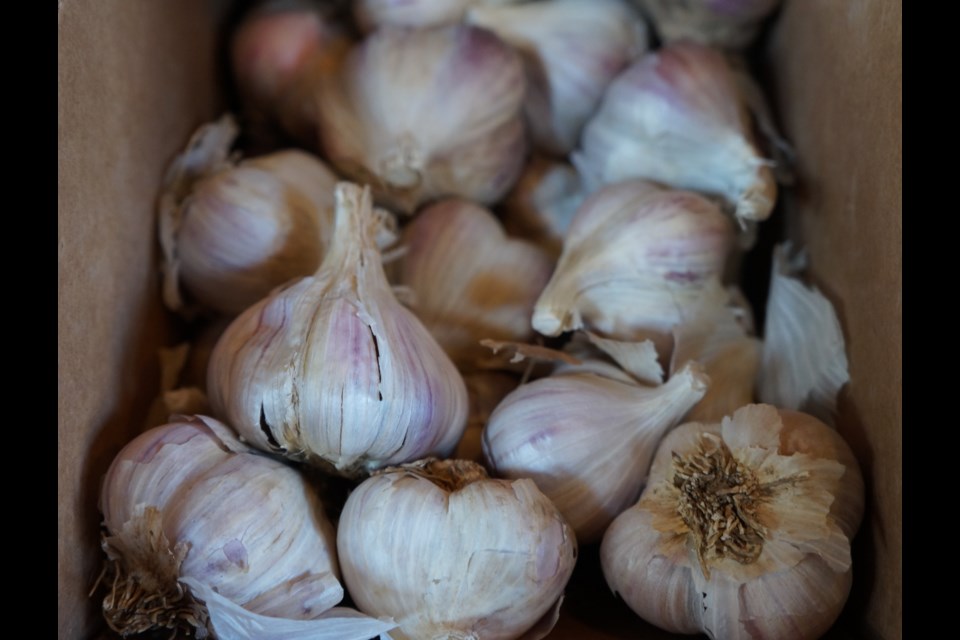Though 2017 is proving to be the exception to the rule, in more ways than one, fall is normally the time to clean out the garden — to put the beds to bed.
But there is one more crop to go in, and one that will reward even a beginning gardener with not one, but two harvests.
Inspiring festivals across the country, garlic is a staple in the kitchen and inspires pungent praise from those who love it. And though it is touted as an easy crop to grow, the northern garden is a temperamental one, and this can often mean the general guidelines given in gardening books or on the internet just don’t apply.
This is where local experts can help.
With 32 years’ experience gardening in the north, Martha Reid of Southview Greenhouse Growers (http://southviewgreenhouse.ca/) has planted a few bulbs of garlic, and said now is just the right time of year to plant yours.
“Towards the end of October is when people really start putting in their bulbs,” said Reid. “It’s good to have it in and some rooting on the clove, but you don’t want green growth (growth from the top of the bulb) … You want to plant it at least four weeks before the ground freezes.”
Of course, like most northerners, garlic has to fight through the winter. To ensure you don’t lose any to frost, start with a hardy variety. She advises choosing hardneck varieties, which also store quite well, and recommends Music, German Red, Metechi, and Siberian.
As for planting, a raised bed is always a plus, allowing the soil to warm faster in the spring, but any sunny location will do. She recommends adding organic material – compost or animal manure, among others – and adds that well-draining soil is a must.
“Garlic likes to have some moisture, but it doesn’t want to be sitting in it, in a wet area, or your cloves will rot on you.”
She also recommends marking your planting location.
“Mark it so you’re not going to dig it up in the spring,” she said. “It’s got to be a dedicated area in your garden that you can leave until the end of July when you harvest it.”
Cover the area with straw – not hay – in a layer four inches deep to protect the bulbs, and you’re all set for spring.
When the weather finally turns warm again, and the buds begin to appear on the trees, clear away the straw from the top to allow the bulbs to see the sun, and watch them grow. But don’t think you need to wait all the way to July to reap the benefits of your fall planting. Garlic scapes – the stem of the flower – has surprisingly fresh and delicious mild garlic flavour, with a satisfying crunch.
The flowers should be cut, whether you eat the scapes or not, to prevent the plants’ energy from going to seed production.
“Ten to 14 days after they appear, cut them off,” said Reid. “And you’ll know when it’s (the bulb) matured when the leaves start to brown a little. Then you dig from the ground.”
Garlic can be enjoyed throughout the year, even lasting into the next spring depending on your use. If you are looking to store your garlic, make sure you dry it carefully.
“Don’t wash them – just sort of shake them to get the dirt off and remove it from the direct sunlight,” said Reid.
She recommends hanging it, or placing on a framed screen, anywhere with good air circulation and no moisture. Leave it two to three weeks to let it dry, and then for the winter, store in a cool, dry place.
After that, just enjoy.
Jenny Lamothe is a freelance writer in Greater Sudbury. You can read her blog here.
